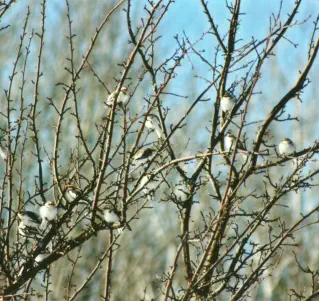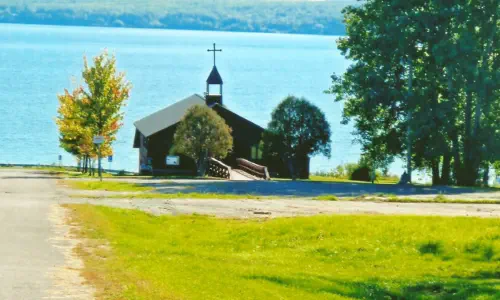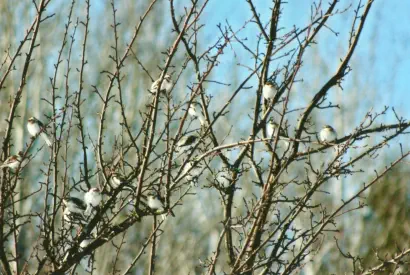Heading Text



History of Baraga Township
In 1875, Baraga County was organized by an act of legislature, with the county seat established in L'Anse. James Bendry became Supervisor of
Baraga Township as it then existed, and he served from 1875-1882.
Bendry started steam-operated sawmill in 1864 in Baraga. The next company to establish a mill was the Sturgeon River Company, which was set
up in 1883. This mill was later purchased by the Nester brothers of Saginaw, Michigan, who continued to operate it for a number of years.
The Nester mill was in competition with John Fink's mill. The Nesters' influence on Baraga continued in later years because of the shipyards,
which they established for building barges. The barges were designed to carry one million board feet per trip.
The character of Baraga Township is reflected in its natural features - the Keweenaw Bay, rolling hillsides, farmlands, lakes, streams, woodlands,
and open spaces help define those traits that draw people to the area. In the past, major alteration and destruction of these natural features
produced far-reaching impacts, some of which can still be seen today. The Township's residents are aware of the quality of their environment and
support strong policies in favor of protecting the Township's natural features.
Natural Features
Natural features provide an essential element of the quality of life in Baraga Township. In
addition to their recreational value, other benefits of natural features include:
•
Clean water supplies for homes served by wells
•
Wildlife habitats
•
Ground water recharge and purification, flood control, pollution protection and the
support of unique plant and animal life
•
Productive agricultural land
•
Aesthetics (views, serenity, rural nature, etc.)


In the 1860s, the Northern Peninsula of Michigan was rapidly coming to
the front as the most promising mineral region in all North America. An
army of prospectors swarmed through the hills, valleys and mountains,
and new discoveries were constantly being made; mills and furnaces were
constantly going up; the yield of bullion was steadily on the increase;
capital was seeking investment; railroads penetrated in every direction
and the career of Baraga County was onward and upward.
In 1891, the village of Baraga was incorporated. The combined population
of the village and township was 2,097. The formation of Covington
Township in 1893 changed the geographical boundaries of Baraga
Township. The first Supervisor of Baraga Township as we know it today
was L. J. Callagher.
There were as many as 17 one-room schools in Baraga Township in the early 1900s. These schools were rural one-room schools, first heated
by a fireplace, and later by a pot-bellied stove.
The Value of Natural Features:
Website by North Country Website Design
Copyright © Baraga Township 2025



History of Baraga Township
In 1875, Baraga County was organized by an
act of legislature, with the county seat
established in L'Anse. James Bendry became
Supervisor of Baraga Township as it then
existed, and he served from 1875-1882.
Bendry started steam-operated sawmill in
1864 in Baraga. The next company to establish
a mill was the Sturgeon River Company, which
was set up in 1883. This mill was later
purchased by the Nester brothers of Saginaw,
Michigan, who continued to operate it for a
number of years.
The Nester mill was in competition with John
Fink's mill. The Nesters' influence on Baraga
continued in later years because of the
shipyards, which they established for building
barges. The barges were designed to carry one
million board feet per trip.
The character of Baraga Township is reflected
in its natural features - the Keweenaw Bay,
rolling hillsides, farmlands, lakes, streams,
woodlands, and open spaces help define
those traits that draw people to the area. In
the past, major alteration and destruction of
these natural features produced far-reaching
impacts, some of which can still be seen
today. The Township's residents are aware of
the quality of their environment and support
strong policies in favor of protecting the
Township's natural features.
Natural Features
Natural features provide an essential
element of the quality of life in Baraga
Township. In addition to their recreational
value, other benefits of natural features
include:
•
Clean water supplies for homes served
by wells
•
Wildlife habitats
•
Ground water recharge and purification,
flood control, pollution protection and
the support of unique plant and animal
life
•
Productive agricultural land
•
Aesthetics (views, serenity, rural nature,
etc.)


In the 1860s, the Northern Peninsula of
Michigan was rapidly coming to the front as
the most promising mineral region in all
North America. An army of prospectors
swarmed through the hills, valleys and
mountains, and new discoveries were
constantly being made; mills and furnaces
were constantly going up; the yield of bullion
was steadily on the increase; capital was
seeking investment; railroads penetrated in
every direction and the career of Baraga
County was onward and upward.
In 1891, the village of Baraga was
incorporated. The combined population of
the village and township was 2,097. The
formation of Covington Township in 1893
changed the geographical boundaries of
Baraga Township. The first Supervisor of
Baraga Township as we know it today was L. J.
Callagher.
There were as many as 17 one-room schools in
Baraga Township in the early 1900s. These
schools were rural one-room schools, first
heated by a fireplace, and later by a pot-bellied
stove.
The Value of Natural Features:












